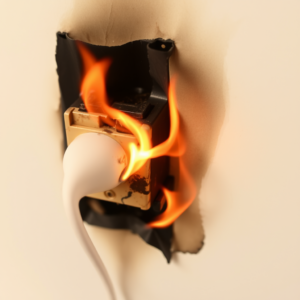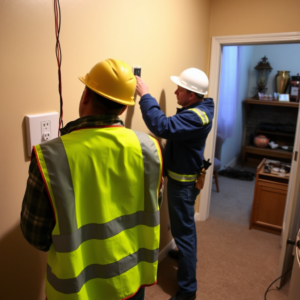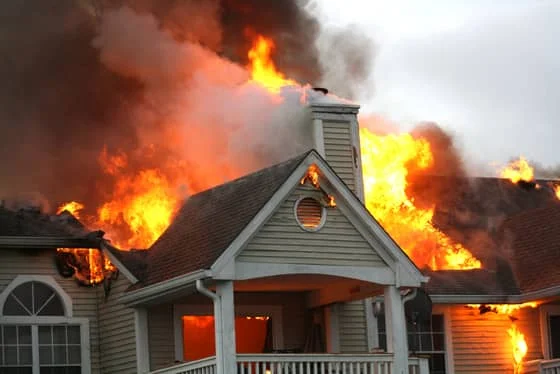Spot the Signs Before It’s Too Late
Electrical fires can be the most dangerous hazards to any household because they can often start undetected in the walls and come up as a full flame. Recognizing the signs your house is in danger of an electrical fire in wall is crucial for homeowners, safety-conscious individuals, and parents. In this blog post you will gain the insight necessary to spot risks and mitigate them, enact protective measures for your home and people in it.
Common Causes of Electrical Fires
The reality about electrical fires is the fact that they can result from numerous factors. Most of which are often ignored until the worst happens. However, you also need to know their indicators and typical causes that will help you act fast and efficiently.
1.Outdated Wiring
- Common in older homes, where wiring may deteriorate over time.
- Deteriorated wiring increases the risk of electrical fires within walls.
2.Overloaded Circuits
- Occurs when too many devices are plugged into a single outlet.
- Generates excessive heat, posing a significant fire hazard.
3. Faulty Electrical Appliances
- Includes aged or inadequately cared for devices susceptible to electrical malfunctions.
- Faults can cause overheating, leading to potential fires.
- Regular inspection and maintenance can help prevent these issues.
Warning Signs of an Electrical Fire 
Recognizing the warning signs in the early stages can help avert a catastrophe
- Erratic movements of the lights is a common sign that there are problems with the electrical circuit. While they may appear innocent enough, if there is constant flickering, then there could be an issue with the wiring inside your walls.
- Frequent tripping of the circuit breaker should not be also overlooked. It means that there is excessive or complete overload of the electrical system, which may eventually lead to walls getting electrical fires.
- Burning odors even when there is no visible occurrence of smoke or fire. Such a situation may arise out of wires overheating and start melting the plastic insulations around them and this is likely to cause an outbreak of fire. Purchasing the right equipment to take advantage of provide should not be a problem.
- Warm feeling electrical sockets can also be a cause for worry. For instance, a warm outlet can be a sign that there is an electrical fire in the wall.
Make sure to attend to these matters right away in order to safeguard your house.
DIY Safety Checks for Homeowners
Taking a proactive approach to home safety can make all the difference. Start by checking the electrical fittings and appliances of your residence on a regular basis. Inspect for exposed wires, aloof ties, or any other indication of their deterioration. These easy mini-assessments can assist you in spotting threats which could escalate into dangerous wall electric fire situations.
 It’s also important to monitor the load on your circuits. Avoid plugging too many devices into a single outlet or extension cord, as this can lead to overheating. Distribute heavy-duty electrical equipment over several circuits to ensure even distribution of the load. Such subtle variations can go a long way in mitigating the risk of electrical fires.
It’s also important to monitor the load on your circuits. Avoid plugging too many devices into a single outlet or extension cord, as this can lead to overheating. Distribute heavy-duty electrical equipment over several circuits to ensure even distribution of the load. Such subtle variations can go a long way in mitigating the risk of electrical fires.
Educating your household about electrical safety is another effective preventive measure. Educate everyone in the household on the correct way to connect and disconnect any electronic device. Also emphasize the need to avoid overfilling sockets with too many devices. This advice may help prevent home electrical fire hazards.
The Importance of Professional Inspections
While DIY safety checks are helpful, they shouldn’t replace professional inspections. Electricians have the skills to thoroughly examine your home’s wiring and spot hidden risks of electrical fires in the walls.
The services of qualified electricians can enhance the electrical installations in your house by adding fittings, repairing defects, and even improving the overall safety of the electrical installations in your home. These alterations, such as modifying the existing wiring structure or installing extra circuits, can significantly minimize the risks of electrical fires.
Creating an Emergency Response Plan
Emergencies can happen despite your best efforts, so having an emergency response plan is crucial. Start by ensuring everyone in your household knows where the fire extinguishers are located and how to use them. These tools can help contain small fires and prevent them from spreading.
Furnish a concise evacuation strategy that specifies secure exit locations and assembly areas around your residence. Ensure implementation of this plan on a periodic basis with your family so that each individual is aware of the procedures in case an electrical fire occurs in the wall. Being the more prepared you can if an emergency occurs.
Finally, install smoke detectors throughout your home and test them regularly. These devices provide early warnings that can save lives. Keep the batteries fresh and make sure the detectors are in good working order. With these steps in place, you’ll be ready to handle any fire-related emergencies.
Conclusion
Electrical fires pose a serious threat to home safety, but with vigilance and proactive measures, they can be prevented. By understanding the warning signs and taking steps to address them, you can protect your home and loved ones from the devastating effects of an electrical fire in wall. Remember to perform regular safety checks, schedule professional inspections, and prepare an emergency response plan. With these strategies in place, you’ll have peace of mind knowing that your home is safe and secure. For more information and resources on electrical safety, consider reaching out to fire cash buyers or local fire safety organizations who can provide additional guidance and support.

